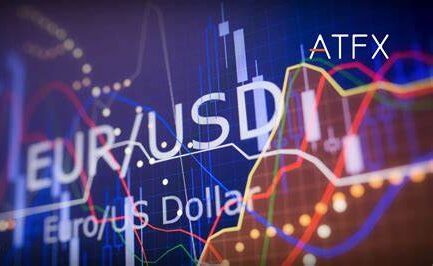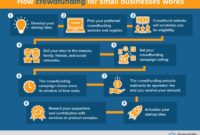Trade EUR/USD – pair is one of the most popular activities in the foreign exchange (forex) market. This article will delve into the intricacies of how to trade EUR/USD, offering insights into strategies, analysis techniques, and important considerations. Whether you’re a novice or looking to refine your trading skills, this guide will equip you with the knowledge you need.
Table of Contents
ToggleUnderstanding the EUR/USD Currency Pair
What is EUR/USD?
The EUR/USD pair represents the exchange rate between the Euro (EUR) and the U.S. Dollar (USD). As the most traded currency pair globally, it is a cornerstone of forex trading, making it essential for traders to understand its dynamics.
Why Trade EUR/USD?
- Liquidity: The EUR/USD pair boasts high liquidity, which means traders can enter and exit positions with ease.
- Volatility: It often experiences significant price movements, providing ample opportunities for profit.
- Economic Indicators: Economic reports from both the Eurozone and the United States heavily influence the EUR/USD exchange rate, offering traders data to analyze and predict market movements.
How to Trade EUR/USD: Step-by-Step Guide
Choose a Reliable Forex Broker
Before you start trading EUR/USD, selecting a trustworthy forex broker is crucial. Look for brokers that offer:
- Low Spreads: The difference between buying and selling prices should be minimal.
- Regulation: Ensure the broker is regulated by a reputable authority.
- User-Friendly Platform: A trading platform that is easy to navigate will enhance your trading experience.
Learn to Analyze the Market
Understanding market analysis is vital for trading success. There are two primary types of analysis: fundamental and technical.
Fundamental Analysis
This approach involves evaluating economic indicators that affect currency values. Key indicators for EUR/USD include:
- GDP Growth Rates: Economic performance can influence currency strength.
- Interest Rates: Central bank policies impact currency valuation.
- Inflation Rates: High inflation can lead to currency depreciation.
Traders should follow reports from the European Central Bank (ECB) and the Federal Reserve (Fed) for insights.
Technical Analysis
This method focuses on price movements and patterns. Traders utilize charts and indicators to forecast future price trends. Common tools include:
- Moving Averages: Helps identify the direction of the trend.
- Relative Strength Index (RSI): Indicates overbought or oversold conditions.
- Fibonacci Retracement: Used to identify potential reversal levels.
Develop a Trading Strategy
A well-defined trading strategy is essential for success in the EUR/USD market. Here are some popular strategies:
Day Trading
This involves opening and closing positions within the same trading day. Traders benefit from small price fluctuations, making it suitable for those who can monitor the market closely.
Swing Trading
Swing traders hold positions for several days to capitalize on price swings. This strategy allows traders to avoid the stress of daily fluctuations while still profiting from larger market moves.
Scalping
Scalping is a short-term strategy where traders aim to make quick profits from minor price changes. This requires a deep understanding of the market and quick decision-making skills.
Implement Risk Management Techniques
Risk management is a crucial aspect of trading. Here are some techniques to protect your investment:
Set Stop-Loss Orders
A stop-loss order automatically closes your position at a specified price, limiting potential losses. For instance, if you buy EUR/USD at 1.1000, you might set a stop-loss at 1.0950 to limit losses to 50 pips.
Use Position Sizing
Determining the appropriate position size is essential to managing risk. A common rule is to risk no more than 1-2% of your trading capital on a single trade.
Diversification
Avoid putting all your capital into a single trade. Diversifying your portfolio can reduce risk and improve potential returns.
Key Considerations When Trading EUR/USD
Economic Calendar
Keeping track of the economic calendar is crucial for EUR/USD traders. Major economic releases can lead to volatility in the currency pair. Events to watch include:
- Non-Farm Payrolls (NFP): A critical report from the U.S. that measures employment changes.
- ECB Rate Decisions: Changes in interest rates can significantly affect the Euro’s strength.
- Consumer Price Index (CPI): A key indicator of inflation in both regions.
Global Events and Their Impact
Geopolitical events can also influence the EUR/USD exchange rate. Situations such as elections, trade agreements, or crises can lead to sharp price movements. Staying informed about current events will help you make better trading decisions.
Trading Sessions
The forex market operates 24 hours, but the EUR/USD pair is most active during specific trading sessions. The overlap of the London and New York sessions, typically between 8 AM and 12 PM EST, offers the highest liquidity and volatility.
Conclusion
Trading the EUR/USD currency pair can be both rewarding and challenging. By understanding the market dynamics, employing effective strategies, and practicing diligent risk management, you can enhance your chances of success. Remember to continuously educate yourself and adapt to changing market conditions.
For more resources on forex trading strategies, you can visit Investopedia’s Forex Trading Guide.
With patience and practice, you can navigate the complexities of the forex market and make informed decisions when trading EUR/USD. Happy trading!




